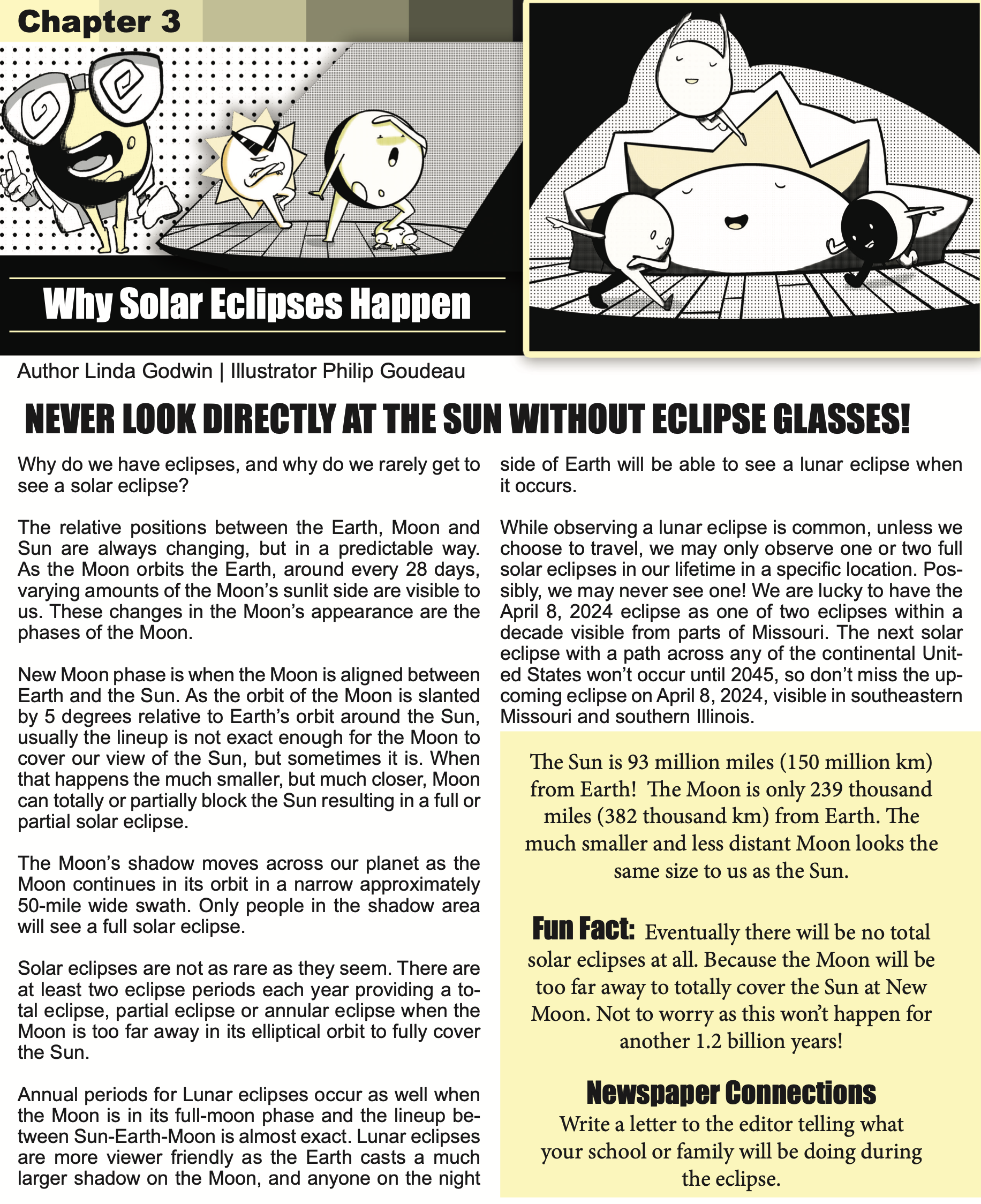
Autora Linda Godwin | Ilustrador Philip Goudeau
NEVER LOOK DIRECTLY AT THE SUN WITHOUT ECLIPSE GLASSES!
Why do we have eclipses, and why do we rarely get to see a solar eclipse?
The relative positions between the Earth, Moon and Sun are always changing, but in a predictable way. As the Moon orbits the Earth, around every 28 days, varying amounts of the Moon’s sunlit side are visible to us. These changes in the Moon’s appearance are the phases of the Moon.
New Moon phase is when the Moon is aligned between Earth and the Sun. As the orbit of the Moon is slanted by 5 degrees relative to Earth’s orbit around the Sun, usually the lineup is not exact enough for the Moon to cover our view of the Sun, but sometimes it is. When that happens, the much smaller but much closer Moon can totally or partially block the Sun resulting in a full or partial solar eclipse.
The Moon’s shadow moves across our planet as the Moon continues in its orbit in a narrow, approximately 50-mile wide swath. Only people in the shadow area will see a full solar eclipse.
Solar eclipses are not as rare as they seem. There are at least two eclipse periods each year providing a total eclipse, partial eclipse or annular eclipse when the Moon is too far away in its elliptical orbit to fully cover the Sun.
Annual periods for lunar eclipses occur as well when the Moon is in its full-moon phase and the lineup between Sun-Earth-Moon is almost exact. Lunar eclipses are more viewer friendly as the Earth casts a much larger shadow on the Moon, and anyone on the night side of Earth will be able to see a lunar eclipse when it occurs.
While observing a lunar eclipse is common, unless we choose to travel we may only observe one or two full solar eclipses in our lifetime in a specific location. Possibly, we may never see one! We are lucky to have the April 8, 2024 eclipse, as one of two eclipses within a decade, visible from parts of Missouri. The next solar eclipse with a path across any of the continental United States won’t occur until 2045, so don’t miss the upcoming eclipse on April 8, 2024, which will be visible in southeastern Missouri and southern Illinois.
The Sun is 93 million miles (150 million km) from Earth! The Moon is only 239 thousand miles (382 thousand km) from Earth. The much smaller and less distant Moon looks the same size to us as the Sun.
Fun Fact: Eventually there will be no total solar eclipses at all. Because the Moon will be too far away to totally cover the Sun at New Moon. Not to worry as this won’t happen for another 1.2 billion years!



















